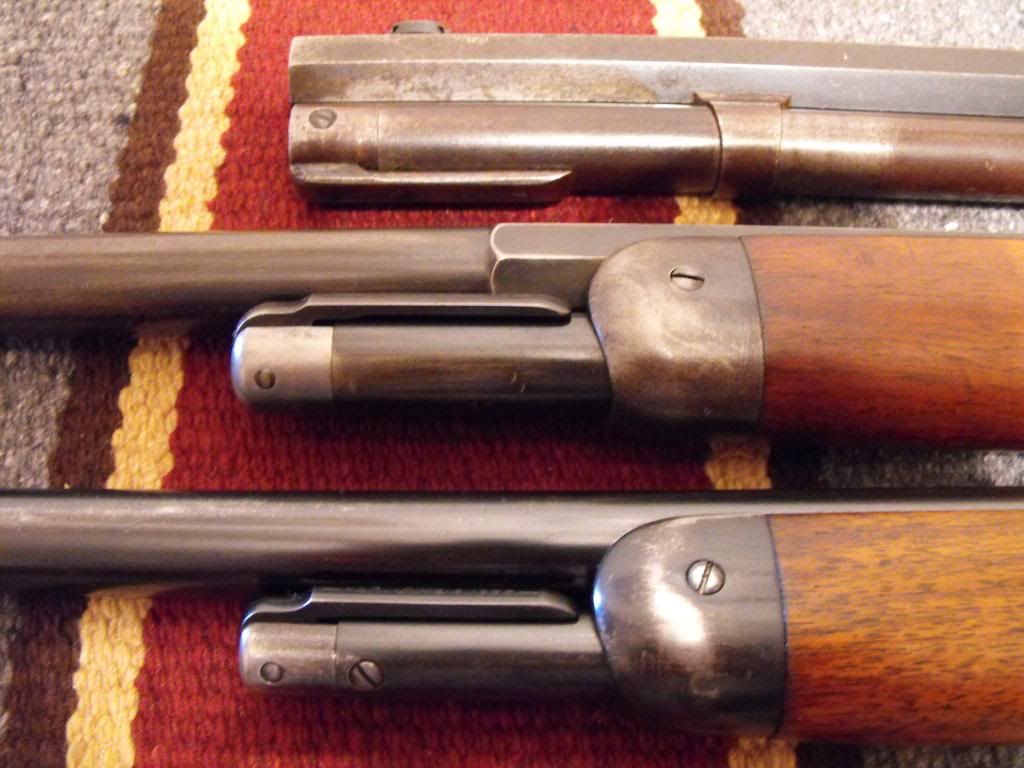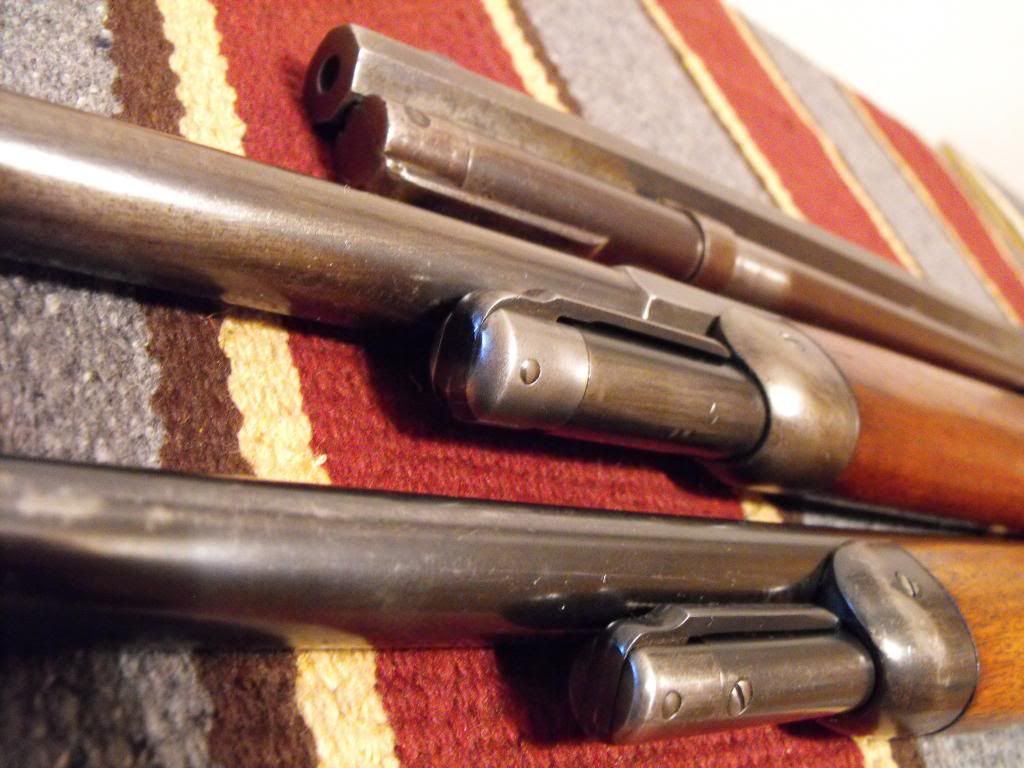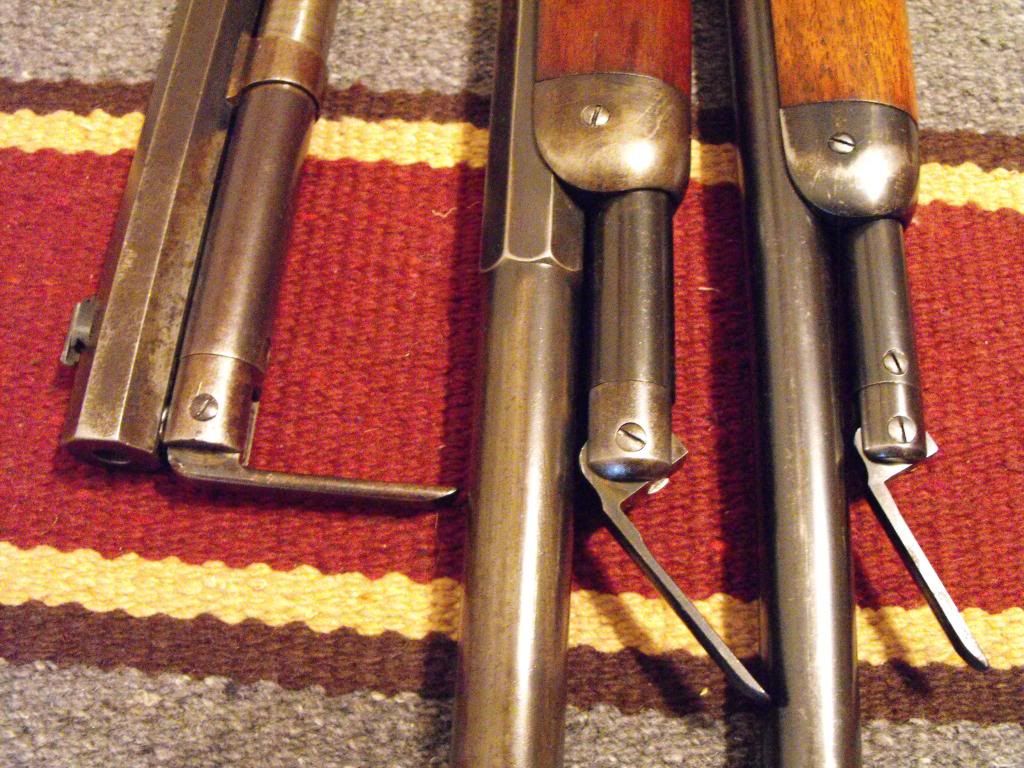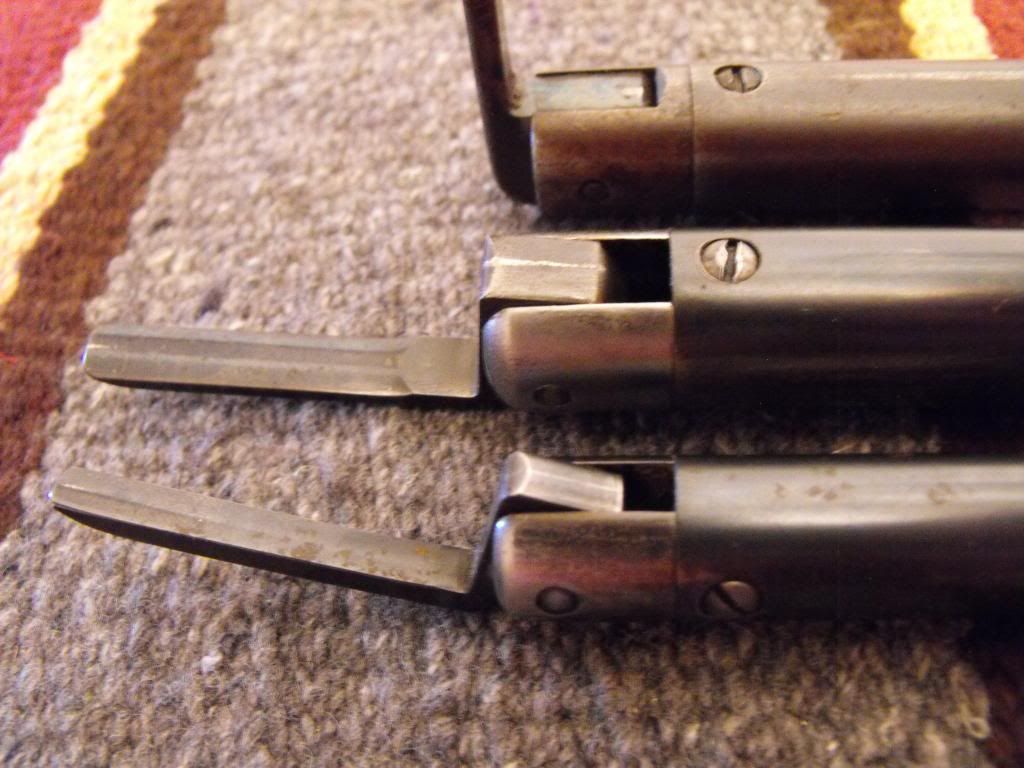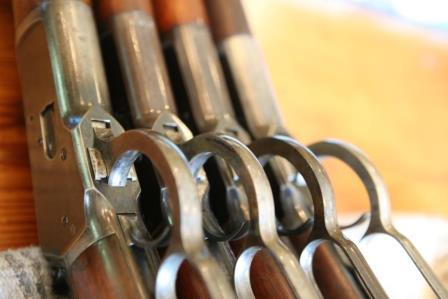January 24, 2013
 Offline
OfflineOk, so after having my own “oh Shxt” moment here on the forum; here is why I believe Winchester did what they did
Two questions:
a). Why did Winchester change the screw location on the small cal 92s when they had a proven design that they had been using on the 1886, 1894 and large cal 1892s?
b). Why did they see the need for a screw that went completely thru the magazine and magazine plug when a ½ screw would work as on the above mentioned models?
Here is what I found, to answer a. The small cal mag plug is approximately .100 smaller in diameter than the 92/94 TD mag plugs. The length of a standard mag plug retaing screw under the head is .331, so if Winchester had put the hole in the same location as the larger calibers and used the standard screw, the screw would protrude into the plunger hole approximately .030, slightly crushing the plunger spring and blocking the hole to the point that the plunger could not properly retract.
For b. Why did Winchester use a thru screw? Even after changing the location of the screw, the screw hole still breaks into the plunger hole approximately .015, my guess is that Winchester decided to use a thru screw so that the spring and plunger would ride over an unthreaded portion of the screw giving it a smother surface area.
Bottom line is that with the smaller calibers, Winchester was running out of room.
V/R
Mike
January 26, 2011
 Offline
OfflineMike,
Thanks to you introducing this topic I know I have been motivated to research and learn more about the TD feature of Winchesters. Thanks again to you and all the others that contributed to the thread. I think most of us will be looking at large and small caliber cranks not only for scallops but screw placement in the future. Interesting, keep questioning, it invites comment and the knowledge that flows from it.
Thanks again, Gene
😀
September 22, 2011
 Online
OnlineWin38-55 said
$22,525 final bid
Granted, without a doubt, this seems like a nice rifle. However, the final price seems steep to me, especially as it is not in .44-40. I would have thought that even if in .44-40, this would be high. I have this rifle’s twin, as far as condition and features, except mine is in .25-20 and lacks walnut quite as fancy (and mine does have a level with the bubble in the rear sight slot and a tang sight that is rare — I have forgotten what it is, but it is likely original to the gun, maybe a Vernier?). However, I know what I paid for mine 15 years ago, and, even counting, for substantial appreciation, and discounting for the above, as described, it seems hard to believe mine could be worth what it is. I swore I would never start talking about what things used to cost, as that was then, and this is now, so maybe this now makes me officially an old geezer.
1 Guest(s)


 Log In
Log In




